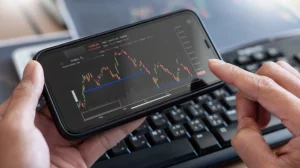Sam Bankman-Fried, decentralized finance (DeFi) investor, became an official cryptocurrency billionaire in 2021 due to his secondary and more visible business, FTX. The crypto exchange developed to be the second largest in the world and an industry behemoth, with $10-$15 billion transacted each day. Alameda Research, a quantitative cryptocurrency trading firm, was launched in October 2017.
Advertising campaign:
Mr. Bankman-Fried launched an ambitious charity, participated in dozens of other crypto startups, bought shares in the trading platform Robinhood, contributed to political campaigns, conducted media interviews, and proposed to Elon Musk billions of dollars to assist finance the mogul’s acquisition of Twitter. Fried told CNBC that the previous CEO aggressively advocated collaboration with 11-time Grammy Award winner Taylor Swift. However, some employees at the firm were opposed to the sponsorship because they thought it was too expensive and did not believe Swift was a suitable fit to reach potential bitcoin traders.
Voluntary bankruptcy:
FTX, Alameda, and 134 business entities filed for Chapter 11 voluntary bankruptcy on November 11, 2022, rendering many consumers not to withdraw their cash. FTX owed about $3.1 billion (£2.5 billion) to its 50 largest debtors in a court filing. On 13 December 2022, Mr. Bankman-Fried was charged with “one of the greatest financial frauds in US history” by US officials.
This came nine days after a leaked balance sheet from Alameda indicated that the company’s books were highly reliant on a cryptocurrency created by FTX. Mr. Bankman-Fried stated that on Monday, November 28, cryptocurrency lender Alameda had amassed a significant “margin position” on FTX, implying that It lent money from the exchange. He stated that the post was worth billions of dollars but declined to elaborate. Ms. Ellison ran Alameda, but Mr. Bankman-Fried was also active, contributing to essential trade decisions, according to a source familiar with the company’s inner workings.
FTX and Alameda were tightly intertwined. Alameda traded aggressively on the FTX platform, which meant that it gained when other FTX clients lost money, a situation that critics dubbed a conflict of interest. Mr. Bankman-Fried has previously defended the arrangement, claiming that Alameda supplied critical liquidity — financial injections that allowed other clients to complete trades on the exchange.
Ponzi scheme :
Former FTX clients, academics, and even crypto enthusiasts have claimed that Bankman-now-defunct Fried’s cryptocurrency exchange was a “Ponzi scheme,” resulting in a flood of legal lawsuits against him and his company. There have been no decisions on the cases. It charges the corporation and its supporters with peddling unregistered securities.
Allegations against Mr. Bankman-Fried:
He was apprehended in the Bahamas Mr. Bankman-Fried has declared that he will oppose extradition to the United States. Mr. Bankman-Fried is facing eight federal lawsuits in the United States involving wire fraud, conspiracy to defraud, and money laundering. He is also facing civil charges of cheating investors who invested more than $1B in the company.
One of the most significant charges against Mr. Bankman-Fried is that he utilized customer monies to support Alameda, his investment trading firm. Officials have also charged him with breaking campaign financing laws. Mr. Bankman-Fried denied knowing that FTX’s linked trading company, Alameda Research, was using FTX customer funds. The exchange had an estimated 1.2 million registered customers who used it to buy cryptocurrency tokens such as Bitcoin and thousands of others.
The Aftermath of FTX’s Downfall
The abrupt collapse of the crypto exchange has startled the industry. Mr. Zhao, a previous FTX investor, still held a considerable quantity of FTT, a cryptocurrency created by FTX to allow trade on its platform. Mr. Zhao declared on Twitter on November 6 that he was selling the FTT, causing consumers to rush to withdraw their FTX investments.
FTX collaborations with celebrities such as Tom Brady, Gisele Bündchen, and Steph Curry, many of whom are now being sued by investors in the aftermath of the company’s demise.
Failure in risk management:
Sam Bankman-Fried has admitted to failings in risk management at FTX, but he believes he is not criminally liable. He remarked that if he had spent ‘one hour per day’ thinking about risk management FTX might not have crashed. For fraud and conspiracy, he faces up to 150 years behind bars.
Conclusion:
Sam Bankman-Fried, a 30-year-old entrepreneur, shifted from industry leader to industrial villain, dropping most of his riches, looking at his $32 billion company go bankrupt, and becoming the subject of Justice Department and Securities and Exchange Commission investigations. However, he depended on branding and publicity to propel his crypto exchange from startup to stalwart. From huge traders to average crypto enthusiasts, many are left wondering if they will ever be able to recover their assets that have become stuck in FTX’s digital wallets. It is unknown how much money customers who possess funds in the exchange will receive following the fraud and bankruptcy processes, while some experts and critics have warned that it could be a tiny percentage of what they put in.











